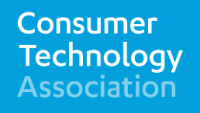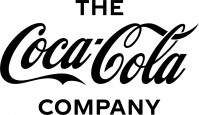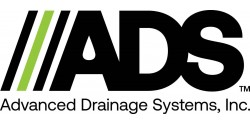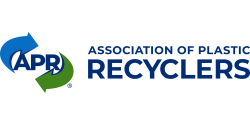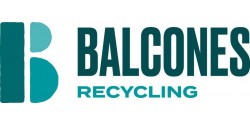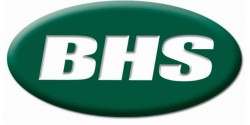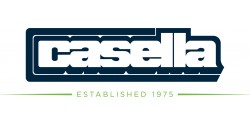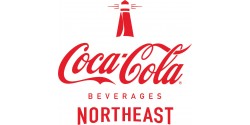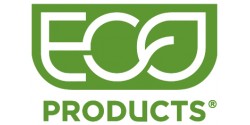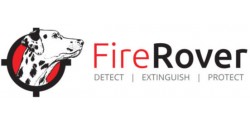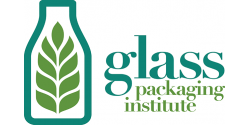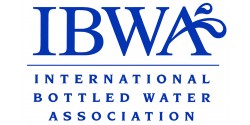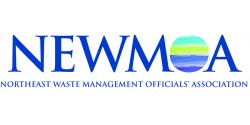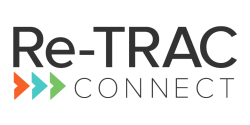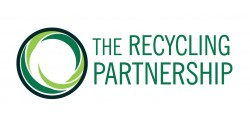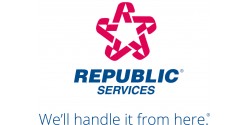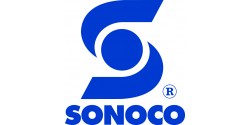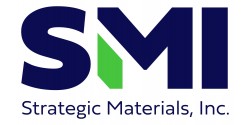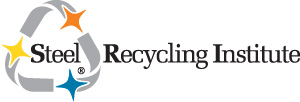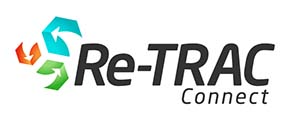October 2013
MEMBERSHIP
Renewing Sustaining Member
- Good Point Recycling
New Supporting Member
- City of Lowell, Massachusetts
Renewing Supporting Members
- Call2Recycle
- Rockland County Solid Waste Management Authority
New Individual Supporter
- Donna Barlow Casey, Vermont
NERC NEWS
- Creating a Plan of Action for Organics Management - NERC Fall Conference
- NERC Staff Joins Reuse Steering Committee
- Reuse Marketplace Now Part of Social Media Scene
- Organics Management Workshop in Washington County, New York
- NERC Presents at Connecticut Meeting & ERCC Workshop
- Uses for Scrap Metal – A NERC Blog Worth Repeating
STATE UPDATES
DELAWARE
MASSACHUSETTS
ADVISORY MEMBER NEWS
- Beyond the Recycle Bin
- Electronic Recyclers International Expands Holliston Facility
- 25 Years & A Billion Tons of Steel Recycled
- UNTHA America to Be at Fall Trade Shows
- What Is Old Is New Again: UNTHA Chooses Wooden Flooring in Assembly Hall
OF GENERAL INTEREST
|
NERC's mission is to advance an environmentally sustainable economy by promoting source and toxicity reduction, recycling, and the purchasing of environmentally preferable products and services. |
State and Advisory Member Updates, as well articles of General Interest and guest blogs are provided as submissions to NERC and may not reflect the policy or position of the Northeast Recycling Council, Inc.
NERC is an equal opportunity provider and employer.
We are delighted to thank renewing Sustaining Member Good Point Recycling and to welcome the newest Supporting Member - the City of Lowell, Massachusetts. In addition, we are grateful to renewing Supporting Members Call2Recycle and Rockland County Solid Waste Management Authority. In addition, yet another Individual Supporter has stepped forward; Donna Barlow Casey, Vermont. Thank you to all of our members and supporters.
A hallmark of NERC is the strength of multi-stakeholder involvement and problem solving. This is a direct result of the active participation and support of NERC’s Advisory Members. NERC has more than 40 Advisory Members. To see a complete listing and the benefits of membership, visit the NERC Advisory Membership web page.
The broad spectrum of interests represented by NERC’s Advisory Members and Board Members and their willingness to participate significantly contribute to the unique and important role that NERC plays in recycling in the region.
NERC NEWS
Creating a Plan of Action for Organics Management – NERC Fall Conference
Now that diverting organics is a top priority for environmental agencies in the Northeast states, many of us are asking the question, “What roles do or can we play in organics management?” And the answer to this question may not be obvious.
The beauty of organics management is that it is a local and regional issue that everyone’s input can impact in every stage of planning and implementation. The specifics of your plan of action for managing organics will depend on the proximity of composting facilities and end markets and existing and pending regulations and requirements. The key to creating the plan is to make sure that all the pertinent partners are communicating and working together.
At NERC’s Fall Conference—Organics Management in the Northeast – Its Time Has Come!—we offer the session, Identifying & Creating Opportunities for Increased Organics Management in the Northeast ~ A Call to Action, where we will hear the perspective of private business, haulers, and state government about the strategies we can undertake to support organics management. Speakers for the session include:
- Nora Goldstein, Editor, BioCycle Magazine
- Steve Changaris, Northeast Regional Manager, National Solid Waste Management Association
- Cathy Jamieson, Solid Waste Program Manager, Vermont Agency of Natural Resources (Invited)
Conference Location: Hotel Northampton, Northampton, Massachusetts
Dates: October 29 - 30, 2013
Platinum Sponsor
Gold Sponsors
Sponsorship and exhibitor opportunities are available. For more information, contact Mary Ann Remolador, NERC’s Assistant Director & Conference Organizer.
NERC Staff Joins Reuse Steering Committee
Mary Ann Remolador, NERC’s Assistant Director, is now participating on the Reuse Alliance Massachusetts Chapter's Steering Committee. The Chapter, staffed by MassRecycle, was formed to build relationships between individuals and organizations involved in reuse, to increase public awareness and access to reuse opportunities, and to advocate for increased reuse and push for pro-reuse policies. The Steering Committee is presently developing a Reuse Summit which will take place this fall.
For more information, contact Mary Ann Remolador, NERC’s Assistant Director.
Reuse Marketplace Now Part of Social Media Scene
The Reuse Marketplace now has a Facebook page and Twitter account. ‘Like’ our page, become a follower, and stay informed on the available and wanted items on the Reuse Marketplace!
For more information, contact Mary Ann Remolador, NERC’s Assistant Director.
Organics Management Workshop in Washington County, New York
In October, another NERC-sponsored organics management workshop will be held, this time in the village of Greenwich, New York. The Washington County Organics Management Workshop & Roundtable will be held on Wednesday, October 23 from 9 to noon at the Greenwich Elks on Route 40. The training will be followed by a site visit to the Greenwich Village Compost Pile for an on-site discussion of management options for municipal leaf and brush piles.
NERC has been working with state and local community representatives in Maine, New Hampshire, New York, and Vermont to bring together decision makers, municipal officials, commercial and institutional organics materials generators, haulers, and others interested in advancing organics management and composting. The Washington County workshop will be the last of six workshops organized as a part of a USDA-funded organics management project.
The event will provide an overview of best management practices for organics, including: tips, opportunities and case studies; residential yard debris management practices; collection options, including drop-off and curbside collection; municipal on-site composting, farm, and private-sector opportunities; funding and compost marketing success; commercial food scrap reduction, recovery, and composting; and composting and anaerobic digestion in action around New York state. Workshop sponsors include the Northeast Recycling Council, New York State Department of Environmental Conservation, and the Village of Greenwich.
For more information contact Athena Lee Bradley, Projects Manager.
NERC Presents at Connecticut Meeting & ERCC Workshop
NERC's Executive Director, Lynn Rubinstein recently presented an overview about NERC, its activities and initiatives at the monthly Connecticut RCRA Hazardous Waste Advisory Committee Meeting. In addition, at a pre-E-Scrap workshop organized by the Electronics Recycling Coordination Clearinghouse (ERCC), she gave a brief presentation providing an overview of the recent national research that NERC conducted about CRT management by electronics recyclers in the U.S.
The Many Uses for Scrap Metal – A NERC Blog Worth Repeating
This month’s NERC Blog worth repeating is a guest post by Sarah Dawes, who writes for Wastecycle Ltd. in England.
Recycling scrap metal makes good economic and environmental sense. The phrase, “circular economy,” advises that all things manufactured should be made in such a way that they can be later dismantled and recreated into a final end product once the original product has lost its usability to the consumer. Scrap metal is one of those foundation materials that can be refashioned into many new uses.
Industrial Uses
Scrap iron and aluminum metals are being used extensively in the construction industry in projects such as roads and bridges. In the transportation industry, it can be used in the manufacture of automobiles, aircraft and other modes of transportation. Another more recent use is in detoxifying industrial wastewater. Scrap metal is also used widely in the production of containers, which are used extensively by many companies. Many appliances are also made out of scrap metal, especially aluminum. This use of scrap metal by so many industries has helped the environment by minimizing the need for mining natural resources that are becoming scarce. Scrap metal is also much cheaper to use in the manufacture of these items.
New and Stronger Metal Products
Recycled steel metal scraps can be made into higher quality tools through a process using an electric arc furnace. Stainless steel can also be made in this way. Copper scrap is made into products using some of the same processes as steel, which also include blast and reverberator furnace processes. Aluminum scrap metal can also be melted at a much lower temperature than virgin aluminum, so the process consumes much less energy. This is generally true of all recycled metals, which not only saves on energy but Co2 emissions as well. This protects our environment, as well as providing an economic savings in the manufacturing process, which is then hopefully passed on to the consumer.
Home Furnishings
Metal furniture is often made of recycled metals and can be beautiful and durable. Gliders, benches, tables and even lamps are just a few home furnishings that have been created from scrap metal.
Artistic Uses
Some people see a pile of scrap metal and envision a work of art. It has been used in beautiful sculptures by artists. Even people who are not professional artists have used their creativity to form works of beauty out of various recycled metals and are proud to display them on the walls of their homes. Decorative metalwork has a distinctive art style all its own.
Saving Our Environment
In addition to the previously-mentioned uses of scrap metal, it is important to note just how much of a saving there is for our environment. Just in the use of recycled steel, there is an 86% reduction in air pollution. Reduction in water usage is 40%, and reduction in water pollution is 76%. Recycling scrap metal also reduces the size of our landfills.
As the metal recycling industry continues to grow, I'm sure there will be even more uses found for scrap metal in the future. Recycling is just the smart thing to do.
Sarah Dawes writes for Wastecycle Ltd about all things related to recycling. Wastecycle is the East Midlands (England) leading waste management and ferrous and non-ferrous metal recycling company. We’re proud of our commitment to zero waste to landfill policy and work hard towards this by continually investing in new technologies to make this possible.
STATE NEWS
DELAWARE
Delaware Solid Waste Authority Celebrates the Opening of Two New Facilities
The Delaware Solid Waste Authority (DSWA) and its partner company ReCommunity celebrated two large events over the past few weeks. On August 29, DSWA and ReCommunity celebrated the grand opening of ReCommunity’s 35th Materials Recovery Facility (MRF) located at the Delaware Recycling Center in New Castle, Delaware. ReCommunity invested 15 million dollars to repurpose an existing 64,000 square foot building at the Delaware Recycling Center, and installed state-of-the art sorting equipment to process single stream recyclables which include aluminum, plastics, and paper, cardboard, tin and glass collected from throughout Delaware. At full capacity, the MRF can process 160,000 tons of recyclables a year and will save 218,587 cubic yards of landfill space and avoid 1,806,539 gallons of wastewater from getting into landfills. DSWA was able to commemorate the event alongside Delaware Governor Jack Markell, ReCommunity CEO James Devlin, Environmental Protection Agency Regional Administrator Shawn Garvin, members of the Recycling Public Advisory Council and other elected officials.
On September 7, DSWA and ReCommunity celebrated once again, this time welcoming the public to the new DSWA Environmental Education Building and allowing the public to view to the newest MRF opened by ReCommunity. Close to 1,000 people attended the event that had something for everything, from inflatables, to face painting and free hot dogs! Community Day provided DSWA and ReCommunity the opportunity show Delaware exactly what is happening to their recyclables once it leaves the curb and to highlight the educational programs available through DSWA.
If you would like more information on the new DSWA Environmental Education Building or on the new ReCommunity MRF, please contact DSWA Chief of Business and Governmental Services, Mike Parkowski.
MASSACHUSETTS
Web Page Dedicated to Textiles Recycling Launched
The Massachusetts Department of Environmental protection (MassDEP) has launched a brand new textile recycling web page. It’s full of information for municipalities, schools, and the general public about why, how and where to recycle textiles, as well as providing links to educational resources and presentations. The site provides an excellent model for other states or municipalities to use and modify to reflect local or state-specific information, as providing generic material and guidance. For more information contact Brooke Nash, MassDEP.
ADVISORY MEMBER NEWS
Beyond the Recycle Bin
In the back of the kitchen, the garage, the basement, or the mudroom, most of us have our sorting bins. Somehow, as we become more progressive in our recycling, our bins become more interesting. In my pantry, my recycling bins fit my way of thinking. There is compost, glass, metal, plastic, and paper. This variety could make me a little smug, but they are also a reflection of how far my little New England town has come in their way of thinking about what was formerly thought of as waste.
How does something go from being a waste to a resource? For me it was a process of awareness. Now it is a “no-brainer” that metal is valuable and can be used again or that old plastic bottle can become a fleece coat. It is part of our everyday lives now, this understanding that we can’t just use resources – we must steward them. As we become more environmentally savvy as individuals, our neighbors and our town stewards, either lead or follow suit. We do our best where our collective level of understanding currently stands and our sorting bins expand accordingly.
After putting a solar hot water heater on my home, the next level for me was to think of my home as a system. All things going in and all things going out came under scrutiny. Because of this, packaging was reduced, lawn clippings went to compost, and there were many other minor changes that I hoped would make a big difference in my own stewardship of resources. But there was one thing that entirely escaped my system approach to living. It was just so out of sight and out of mind that it never even occurred to me to recycle there, and yet it was a big part of my system.
The stuff we flush. The yuck factor aside, it is part of our homes and our systems, but is it something we can do anything about? Although, we tend to not think about what happens to this “other food waste”, it has to be dealt with somehow. I am responsible about all the other systems in my home, why not this one? Wastewater solids are called sludge, but once treated and tested at a Water Resource Recovery Facility sludge becomes biosolids. I had never really thought about it much, but I do now.
Every home has expenses, and every town does as well. If a town has a water resource recovery facility (formerly known as a wastewater treatment plant), getting rid of the biosolids may be one of the largest expenses for both the facility and the town. We can be good stewards here as well. There are currently three choices of what to do with this used food waste: landfill it, incinerate it, or land apply it. Each has its own pros and cons, but landfilling is rarely a good use of resources.
We compost our kitchen scraps, lawn trimmings, and other organics. Why shouldn’t used food waste – biosolids – get the same kind of attention? It is rich in nutrients and energy and is a valuable resource. It took awhile for us to get on board with other wastes being resources, and it might take a while to overcome the yuck factor and see biosolids as having value as well. This has been happening, steadily over the past few decades. Today, many communities, large and small, are land applying or composting biosolids in an environmentally and fiscally responsible way. More than half of the wastewater solids produced in the U.S. are recycled to soils. At many treatment plants residents line up in the spring to purchase well-treated and safe compost or pelletized biosolids products to use on their own gardens with spectacular results. In some areas, the demand for the bulk products useful to farmers is in such demand that there are waiting lists. Recently a progressive water resource recovery facility superintendent told me that, while giving a tour to a school group, one little girl remarked, “So you sell people back their own poop?” The answer is YES – and that really is full circle, system thinking, beyond the recycling bins.
What can we do when it comes to biosolids recycling? Start by finding out where your local solids go. Even if you have a septic system and leach field in your yard, when the residuals are pumped they go somewhere. What does your town do with their biosolids? My thinking on organic residuals and biosolids evolved in the time I have worked at NEBRA. Although, I have always considered myself environmentally minded and worked in the environmental field, biosolids recycling was a little harder for me to embrace. NEBRA is a 501(c)(3) nonprofit organization dedicated to the environmentally sound and publicly supported recycling of biosolids and other residuals in New England and Eastern Canada. We provide information, training and leadership on the best practices for use of these former waste products as fertilizers, soil amendments and energy sources. My waste-to-resource thinking now embraces biosolids as worth recycling. You may not want biosolids in your sorting bins, but you can include them as one of your recyclables!
By Maggie Finn, NEBRA North East Biosolids and Residuals Association
Electronic Recyclers International Expands Holliston Facility to 125,000 Square Feet
Electronic Recyclers International (ERI), the nation’s leading recycler of electronic waste, has announced that it has successfully expanded its Massachusetts facility by 25,000 sq. ft. This expansion brings the physical size of ERI’s Holliston operations at 89 Cross Street in Holliston to 125,000 sq. ft.
The steadily growing ERI leases the space from Avery Products Corporation and maintains the right to further expand an additional 25,000 sq. ft. in the future, when needed.
“We’re very proud of the tremendous progress and growth we’ve achieved in Massachusetts over the last several years,” said John Shegerian, Chairman and CEO of ERI. “Now, with the continuous growth of the electronic recycling and urban mining markets, we need to make more space to accommodate the needs of the Eastern region.”
“This new space will enable us to further grow our rapidly expanding asset management department,” continued Shegerian, “and add a larger ‘clean room’ for high tech refurbishments and other asset management operations.”
For more information on general recycling needs, visit www.electronicrecyclers.com, or http://1800recycling.com.
25 Years & A Billion Tons of Steel Recycled
Steel Recycling Institute Marks Major Milestones with Release of Recycling Rates
More than one billion tons of steel have been recycled by the North American steel industry since 1988, according to the Steel Recycling Institute (SRI), a business unit of the American Iron and Steel Institute (AISI). SRI marks its 25th anniversary this year with this milestone achievement and the release of the 2012 steel recycling rates.
Established in 1988 as the Steel Can Recycling Institute, SRI was commissioned by the North American Steel Industry to develop an infrastructure for the recycling of steel cans and serve as a primary information and technical resource. By 1993, SRI’s focus had expanded beyond just steel cans to promoting and sustaining the recycling of all steel products. Today, these efforts continue along with credibly documenting the superior environmental performance of steel through rigorous lifecycle studies.
“Since its inception in 1988, SRI has served as a driving force behind growing the availability of a key resource for steelmaking processes—steel scrap,” said Gregory L. Crawford, executive director of SRI. "For a quarter century, SRI has been the local face of the steel industry, providing advocacy, information and assistance in facilitating increases in the recycling of major steel products, including cans, cars, appliances and construction materials.”
To track the success of these recycling efforts, each year, the SRI calculates the recycling rates for steel and major steel products. Recycling rates for steel are generally released up to 18 months following the end of the calendar year as they are based on data released from: AISI Annual Statistical Reports, US Geological Survey, EPA Characterization of Municipal Solid Waste, National Automobile Dealers Association, Association of Home Appliance Manufacturers and the Institute of Scrap Recycling Industries.
For 2012, the overall recycling rate for steel was 88 percent with nearly 84 million tons of steel recycled. This included the more than 1.3 million tons of tin plate steel—the equivalent of 21 billion steel cans, which were recycled at a rate of 72 percent, the highest among packaging materials. More than 16.3 million tons of automotive scrap were recycled at a rate of 92.5 percent in 2012—the equivalent of 11.5 million automobiles. The year-to-year recycling rates for these products are included separately within this packet.
Other rates, including appliance and construction products are based on industry estimates of retail and scrap collections, including the more than 2.7 million tons of appliance steel recycled in 2012 at an estimated 90 percent. Also, each year, based on construction and demolition industry estimates, about 98 percent of out-of-service construction plates and beams are recycled and 70 percent of rebar and other structural steel are captured for recycling through demolition and disassembly.
The steel industry’s impressive recycling accomplishments are also at the core of other environmental advances by the North American steel industry. Since 1990, the steel industry has improved its energy efficiency per ton by 27 percent and has decreased its CO2 emissions per ton by 33 percent—making North American steel an environmentally-preferred material which aids its customers in improving the environmental performance of their products.
“The steel industry’s internationally-recognized energy efficiency, coupled with the recycling rate that is the highest of any material, proves our commitment to sustainability and resource conservation,” said Thomas J. Gibson, president and CEO of AISI. “For 25 years, steel’s recycling successes have been spearheaded by the SRI and we look forward to another quarter century, where steel leads social, economic and environmental advances.”
The commitment to collect and recycle steel has been inherent to steelmaking for nearly as long as steel has been made in North America. This is reflected through external scrap collection for recycling and by extensive recycling of byproducts of the steelmaking process.
“Our company, along with the entire steel industry, has a long history in recycling steel. We recycle many of our byproducts such as slag and blast furnace gas and are committed to continue to look for additional recycling opportunities,” said Ronald Kostyo, Vice President and General Manager, Severstal Dearborn.
UNTHA America to Be at Fall Trade Shows
UNTHA Shredding Technology America, Inc. has several appearances at North American trade shows this fall. Located in Hampton, NH, UNTHA America is a division of the Austrian-based UNTHA shredding technology GmbH, one of the world’s leading providers of size reduction equipment for the recycling industry. The shows provide the perfect opportunity for businesses, industries and communities to gain more information about UNTHA America’s wide range of products and its ability to customize equipment for any recycling needs.
At the shows, UNTHA will highlight their diverse portfolio of shredding technology, including single-, two-, and four-shaft cutting systems. UNTHA offers shredding solutions for a wide range of industries and specializes in customizing their equipment for their clients. “We talk extensively with our clients about what their needs are,” says Bernhard Mueggler, president and CEO of UNTHA America. “Once we know exactly what they want a machine to do, we create a solution. Our machines’ cutting systems can easily be modified to suit a wide range of purposes, so we make sure that our clients receive precisely the right machine for the job. This approach is what sets us apart.”
The first stop on UNTHA America’s schedule was the E-scrap Conference held in Orlando. The E-scrap Conference is the premier North American conference addressing issues and technology regarding the recycling of electronic scrap materials. More than 1,300 attendees from a dozen countries were in attendance. The conference highlighted current research, legislative and policy issues, technology innovations, and reclamation services and markets. UNTHA America currently provides shredding technology to some of the largest recyclers of electronic scrap in the United States.
Next up was the Waste Conversion Technology Conference in San Diego. The conference provided a forum for informing both the public and private sectors about the significant economic and environmental benefits of converting waste materials to alternative fuels such as biodiesel and ethanol, as well as renewable electricity. Presentations were given on waste conversion technologies, biofuels from waste, processing waste materials into feedstock’s and many other intriguing topics. UNTHA America is already involved in waste-to-energy technology thanks to their XR pre-shredder and TR secondary shredder. Both of these models convert household and industrial waste into secondary fuel. “The beauty of these models is that they do not have to be used with mass burning incinerators,” says Bernhard Mueggler, president and CEO of UNTHA America. “They can be used in conjunction with the latest gasification technology, which is very clean and efficient.”
Rounding out the early fall expos is the Paper Recycling Conference & Trade Show on October 16 - 18, 2013 in Chicago. The event brings together suppliers, consumers, equipment vendors, state and local recycling officials, and other industry professionals. UNTHA America staff will take advantage of another key opportunity to share information. “Events such as these are an excellent opportunity for us to learn more about the changes and challenges in our industry, and the recycling needs of consumers,” says Mueggler. “It also allows us to share information about the technology we can provide.”
For more information about UNTHA America, please visit www.untha-america.com or call (603) 601-2304.
What Is Old Is New Again: UNTHA Chooses Wooden Flooring in Assembly Hall
UNTHA shredding technology GmbH of Austria is one of the world’s leading providers of size reduction equipment for the recycling industry. The company, which has a U.S. location in Hampton, NH, is typically on the cutting edge when it comes to research and development in its field. However, when its new Assembly Hall was designed, UNTHA opted to take a page from the past and install wood block flooring.
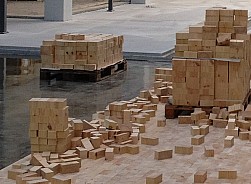 “Wood block flooring is extremely durable,” says Bernhard Mueggler, president and CEO of UNTHA America, who recently toured the new Hall. “It is ideal for industrial applications, as it can withstand the use of forklifts and other mechanical equipment, yet its natural ‘give’ makes it very comfortable underfoot. Workers can stand on wooden floors much longer than on concrete without feeling discomfort and fatigue.”
“Wood block flooring is extremely durable,” says Bernhard Mueggler, president and CEO of UNTHA America, who recently toured the new Hall. “It is ideal for industrial applications, as it can withstand the use of forklifts and other mechanical equipment, yet its natural ‘give’ makes it very comfortable underfoot. Workers can stand on wooden floors much longer than on concrete without feeling discomfort and fatigue.”
The new Assembly Hall is 7,500 square feet and the flooring is comprised of blocks made of oak, which are approximately 4 inches thick and about the size of a standard brick. Wood block flooring is also slip resistant, does not chip or crack, absorbs machine vibrations and sound, is resistant to oils, solvents, lubricants and grease, and is “kinder” to dropped tools--a tool dropped on a wooden floor is more likely to be intact than one dropped on concrete.
The wood block flooring has worked so well in the Assembly Hall that it has been expanded into the Apprenticeship room, where another 4,500 square feet has been installed.
In the late 1800s and 1900s, end-grain wood blocks were first used in the United States for paving streets. These streets were so durable that many of them still exist today, including those in most of downtown of Pensacola, FL. The success of wood block pavers, combined with America’s abundance of timber, then led to the usage of wood blocks as industrial flooring. Beginning in the 1920s, wood block flooring was successfully installed in major manufacturing plants for companies such as General Motors, Ford, Caterpillar, General Electric, Alcoa, Pratt & Whitney, and most major steel manufacturers. At about the same time, the European machine tool industry also adopted wood block flooring for industrial use.
In recent decades, industrial complexes switched to concrete with a two-part epoxy for flooring, finding it cheaper and more fire resistant. But now, as shown by UNTHA’s new plant, the tide has turned again. Petroleum products, such as the epoxies, have gotten more expensive, and industries are realizing that wood block flooring provides a more productive working environment. In addition to European companies such as UNTHA, U.S. manufacturers such as Ford Motor Corporation and Case Corporation have also returned to wood block flooring in their manufacturing halls.
For more information on UNTHA America, visit www.untha-america.com, or call (603) 601-2304.
OF GENERAL INTEREST
Applications being Accepted for National Certification of Sustainable Resource Management Training Programs
Following several years of discussion and input from a broad spectrum of stakeholders, a national certification program has been established for professional training programs for Certified Sustainable Resource Management Professionals to Reduce, Reuse Recycle to Zero Waste. The program complements existing training programs, offers pathways for experienced professionals, and enables higher education to contribute to the expansion of the sustainable resource management industry.
As environmentally-sound waste and resource management becomes a higher priority for local governments, businesses, and institutions, a well-trained pool of Sustainable Resource Management professionals becomes even more important. Certification provides emerging as well as accomplished professionals with the means to distinguish themselves from others in the field. By improving the overall knowledge and understanding of workers in the industry, certification programs help increase the credibility and level of competence in the field.
Development of this national certification program has been led by a National Standards Certification Board (NSCB), appointed in January, 2012 by the Recycling Organizations of North America (RONA). The NSCB will accredit certification programs run by states, regions, organizations, trade associations, universities, and community colleges. Learning outcomes achieved through the certification program include: a command of the technical language and the tools employed to eliminate waste, reuse products and packaging, and use resources efficiently; ability to incorporate applicable laws, regulations and policies; economically sound business practices; health and safety regulations and best practices into everyday resource management work; and, developing effective outreach campaign strategies and techniques to support and measure local economic development and job creation.
Organizations operating certification programs must demonstrate minimum requirements in their training programs, including a minimum of 30 hours of course work; certification by an accredited postsecondary institution; a comprehensive course on Sustainable Resource Management; progressive proficiency exams as well as a comprehensive written exam to demonstrate proficiency; and an alternative pathway process to allow experienced professionals to be credited with knowledge they have gained outside the formal training process.


